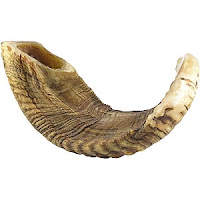By Rabbi Yonassan Gershom
Rosh Hashanah, the day that we traditionally celebrate as the Jewish New Year, comes on the first and second days of the month of Tishri on the Hebrew calendar. But in reality, there are actually four "new years" in Judaism, each serving a different purpose (based on Talmud, Rosh Hashanah 1a, but arranged in a different order here):

- The first of Tishri, for the counting of calendar years, Jubilee years, etc.
- The first of Nissan, for dating the reign of kings and for various legal documents
- The fifteenth of Shevat, for tithing fruits of trees
- The first of Elul, for tithing cattle
The first of Elul "for tithing cattle" was the cut-off point for determining in which year an animal should be included in the count. Animals born before that date were tithed in the old year; animals born after that date were tithed in the new year. Nowadays very few Jews are raising flocks of animals and, since there has not been a Jerusalem Temple since the year 70 C.E. (when the Romans destroyed it), nobody is tithing animals for Temple sacrifices anymore. Nevertheless, this date remains on the Jewish calendar, although, admittedly, it is not very well known today.
 |
| A mother hen on her nest in my yard. (The white spot by her head is a chick.) Very few chicks are hatched this natural way anymore |
In the same way, the New Year for Animals would shift the focus from tithing sacrifices toward learning about how animals are treated on factory farms, comparing that with Jewish teachings about the proper treatment of animals, and making choices about where we get our milk, eggs, and meat -- or maybe even considering vegetarianism as a better alternative. Given that most Jews today are urban people who rarely, if ever, have contact with farmers or farm animals, I think that developing a modern version of this day would be a great educational opportunity.
 |
| Typical ram's horn Shofar |
"A worm serves the Creator with all of his intelligence and ability... A person should consider himself and all creatures as comrades in the universe, for we are all created beings whose abilities are God-given." (Tzava'as Ha Rivash 12)
(This article was reposted here with permission from Rabbi Gershom's website, Notes from a Jewish Thoreau, where you can find more essays exploring the relatonship between Judaism and nature.
See also Richard Schwartz's article, "An Audacious Initiative to Restore the Ancient New Year for Animals" posted on August 8, 2012 on Tikkun Daily.)
No comments:
Post a Comment